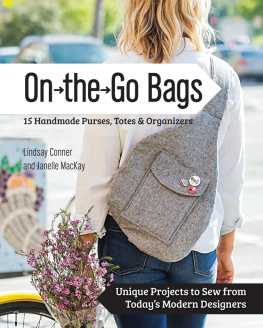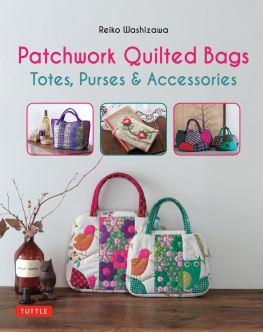

Copyright 2020 by Alicia Steele
All rights reserved. No part of this book may be reproduced in any manner without the express written consent of the publisher, except in the case of brief excerpts in critical reviews or articles. All inquiries should be addressed to Skyhorse Publishing, 307 West 36th Street, 11th Floor, New York, NY 10018.
Skyhorse Publishing books may be purchased in bulk at special discounts for sales promotion, corporate gifts, fund-raising, or educational purposes. Special editions can also be created to specifications. For details, contact the Special Sales Department, Skyhorse Publishing, 307 West 36th Street, 11th Floor, New York, NY 10018 or .
Skyhorse and Skyhorse Publishing are registered trademarks of Skyhorse Publishing, Inc., a Delaware corporation.
Visit our website at www.skyhorsepublishing.com.
10 9 8 7 6 5 4 3 2 1
Library of Congress Cataloging-in-Publication Data is available on file.
Cover design by Daniel Brount
Cover photo by Alicia Steele
Print ISBN: 978-1-5107-5790-5
Ebook ISBN: 978-1-5107-5791-2
Printed in China
To my wonderful husband and two beautiful sons who sacrificed so that I could share my passion with the world. Your love inspires me and makes me whole.

Table of Contents


About This Book

In elementary school it was drilled into our heads to reduce, recycle, reuse, so Ive long been an avid recycler. With age and experience, Ive realized that the reducing and reusing waste are equally if not more important than recycling, so I have focused on these two questions as the main undercurrent in this book: What everyday items do I find myself throwing away that I can make into something reusable, and what reusable items can I make with materials saved from the landfill?
I have pored over my daily life to find where I was creating the most waste and worked to eliminate that waste in any way possible. Disposable kitchen plastic, including grocery bags, plastic wrap, and sandwich bags are the items I would constantly find myself throwing away, so eliminating this is a strong focus of the projects in this book. You will also find tutorials for several projects in the book that will help you to reduce your use of disposable paper.
As a busy mom of two boys, I understand that eliminating plastic completely is not always realistic, but with these projects you can reduce a large portion of your everyday use and waste. Small, incremental changes go a long way toward making a difference. I hope that this book sparks your creativity, and that after spending some time with these projects you are inspired to create other environmentally friendly items that are useful and fun in your everyday life.
A Note on Eco-Friendly Fabrics

I have made every effort to source the materials for this book in an ethical and sustainable way. Many of the projects were created using repurposed materials that I had lying around or purchased at my local thrift store. Giving these items new life helps to keep them from the landfill, so be creative when sourcing your materials. Go through that donation box in your garage, and ask yourself before you throw torn or ruined items away if you could make something new with them. A few ideas for things that can be repurposed are old denim, plastic shower curtains, pool floats, pleather/leather jackets, old sweaters, T-shirts, sheets, pillowcases, and towels.
When I repurpose items, I try and reuse as much of each item as I can. For example, I had a faux leather jacket with a hole in it that I used for almost every project in this book. (If you see a faux leather accent, it was from that jacket!) See the faux leather purse on for an example. You will see that I have left on much of the hardware.
The repurposed projects in this book have been made using fabrics from spoonflower.com. I chose Spoonflower because their main focus is on using sustainable, eco-friendly fabrics such as Eco Canvas, Organic Cotton Sateen, Organic Cotton Knit, and Organic Sweet Pea Gauze. Spoonflower also focuses on sustainability in their fabric production. They print their fabrics on demand which prevents overproducing and reduces fabric waste. They also focus on reducing water waste and pollution by using a sustainable printing process.
If organic fabric is not a viable option for you, start small by focusing on using sustainable materials like 100 percent cotton, and try and avoid synthetic fabrics that are not biodegradable. These fabrics might take two hundred years to break down and are thus more harmful to the environment.

Sewing Tips and FAQs

Should I prewash my fabric?
The rule I follow is this: If you plan to wash whatever you are making, you should first wash the fabric. Wash your fabric in the same manner you will wash your item. For example, if you will be washing a tote bag in hot water and drying on high heat, that is the way you should wash your fabric before sewing.
What is the best way to thread a drawstring into a project?
There are several tools you can use to thread the drawstring through your project. I like to use my wonder clips since they are already at hand on my sewing table. Clip the edge of the drawstring with the wonder clip and then thread the clip through the opening. Just be careful not to grab the clip and open it when threading. You can also use a safety pin: Clip the fabric or string with the safety pin and then thread it through the opening.
Can I use my serger for these projects?
If you are proficient with your serger, or are looking to practice with your serger, you will find frequent use for it in this book. It is not specifically referenced in any of the project tutorials, but you can use it for adding many of the finishing touches. When I mention using pinking shears to finish a raw edge, or a zigzag stitch to finish a seam, go ahead and use your serger instead. The serger is especially nice for finishing on the projects that are not lined.
How do I shorten a zipper?
If your zipper is too long, you can trim the zipper to fit. First, make sure that the zipper pull is well away from where you want to trim, on the part you want to keep. Then, trim the zipper, leaving yourself a few inches with which to work. Trim the teeth away from the tape at the end so that you can easily add a zipper tab.
Next page
















